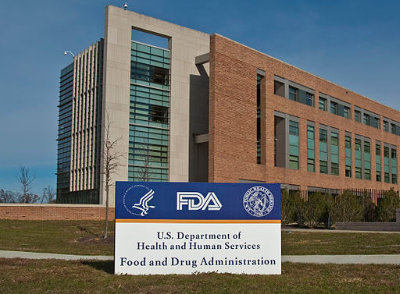“Chevron is one of the most important decisions in U.S. administrative law and has been cited in thousands of cases. But the past is prologue and it’s time to ask the question, is Chevron deference dead?”
Editor’s note: The author has acted as consultant to Regenative, though he had no involvement in the case discussed below.
 The U.S. Supreme Court on Friday added another case to its docket that challenges the Chevron Doctrine, a decades-old principle instructing lower courts to defer to federal agencies’ interpretations of ambiguous laws. The Court said it will hear Relentless, Inc. v. Dept. of Commerce in tandem with an almost identical appeal brought by Rhode Island herring fishers.
The U.S. Supreme Court on Friday added another case to its docket that challenges the Chevron Doctrine, a decades-old principle instructing lower courts to defer to federal agencies’ interpretations of ambiguous laws. The Court said it will hear Relentless, Inc. v. Dept. of Commerce in tandem with an almost identical appeal brought by Rhode Island herring fishers.
Mark your bingo card if you had “Rhode Island herring fishers.”
Chevron
In 1974, the Supreme Court stated that deference depends on an administrative interpretation being consistent with the agency’s other statements and being consistent with the congressional purpose. In 1948, Chevron U.S.A., Inc. v. Natural Resources Defense Council, Inc., 467 U.S. 837 (1984), the United States Supreme Court set forth the legal test for determining whether to grant deference to a government agency’s interpretation of a statute which it administers.
This decision articulated a doctrine now known as “Chevron deference.” The doctrine consists of a two-part test applied by the court, when appropriate, that is highly deferential to government agencies: first, whether Congress has spoken directly to the precise issue at question, and second, “whether the agency’s answer is based on a permissible construction of the statute.”
Chevron is one of the most important decisions in U.S. administrative law and has been cited in thousands of cases. But the past is prologue and it’s time to ask the question, is Chevron deference dead?
What Should the Standard Be?
Witness the Twilight Zone-like predicament of one company’s bizarre interactions with the FDA. The company is Regenative Labs. They manufacture (among other products) Wharton’s Jelly Tissue Allografts. Wharton’s Jelly is human connective tissue used to repair, replace, or supplement missing, damaged, or non-properly functioning tissues.
The FDA’s job is to ensure the product is manufactured according to the agency’s current Good Tissue Practice (cGTP) guidance. Here’s Clue Number One: Wharton’s Jelly isn’t regulated as a drug, but as a tissue because … that’s what it is. Here’s the detail: As defined in 21 CFR 1271.3(c), “homologous use” means the “repair, reconstruction, replacement, or supplementation of a recipient’s cells or tissues with human cells, tissues, and cellular and tissue-based products (HCT/P) that perform the same basic function or functions in the recipient as in the donor.”
The particulars are very geeky. (All the details can be found in the Appellant brief and this recording of the oral arguments held on October 6, 2023.)
As I have previously argued, as with many other areas of the Food and Drug Administration’s (FDA) jurisdiction, peculiar bureaucratic intervention and lack of clarity are causing harm to patients and costing American jobs. Should such behavior be protected under the umbrella of Chevron deference?
Without getting into a philosophical argument over the power of the “Administrative State,” it’s certainly worthwhile to have a frank conversation about what should or should not be “protected” when a science-based agency such as the FDA makes a non-science-based decision. Should such instances be considered valid under Chevron deference? Is that what the Supreme Court intended?
Any conversation of this nature needs to be considered in context. Of course, any discussion of “science-based” decision making needs to start with the caveat that science (and certainly regulatory science) evolves. What happens when a science-based agency (such as the FDA) makes a decision that is neither science-based nor necessarily “in the best interests of the public health? Intelligent people can disagree on the merits of such a decision – but does the FDA deserve Chevron deference? That’s a slippery slope.
On March 21, 2022, the FDA undertook a routine inspection of the Regenative Wharton’s Jelly manufacturing facility in Pensacola, Florida. All FDA-registered facilities like Regenative’s are subject to regular routine inspections. At the end of the inspection, the FDA reported certain observations to the company via a 483 letter, each of which the company addressed and remediated within about 30 days. On October 5, 2022, Regenative Labs asked the FDA for a standard export certificate so they could send Wharton’s Jelly tissue to foreign clients. That standard request was denied and here’s where it gets confusing.
Regenative Labs had previously applied for and received an export certificate for its amniotic membrane patches – manufactured in the same lab as the Wharton Jelly products. Strangely, the initial ongoing inspectional review was not an issue for the patches; yet it was the agency’s basis for not issuing the export certificate for Wharton’s Jelly––another example of the FDA’s lack of regulatory reproducibility, costing companies time, money, and agita, and patients access and affordability.
Whither Chevron deference when a federal agency seeks legal leverage minus the Supreme Court’s standard of “a permissible construction of the statute?”
Let Science Lead
Rather than arguing that Chevron deference is an unconstitutional limit on judicial oversight and perpetuates the “administrative state,” let’s all agree that the FDA must be a leader in regulatory science and, when seeking the protection of Chevron deference, the agency’s use of true scientific expertise, rather than for simply “being the FDA,” should be the standard.
Stay tuned.

![[IPWatchdog Logo]](https://ipwatchdog.com/wp-content/themes/IPWatchdog%20-%202023/assets/images/temp/logo-small@2x.png)

![[Advertisement]](https://ipwatchdog.com/wp-content/uploads/2024/04/UnitedLex-May-2-2024-sidebar-700x500-1.jpg)
![[Advertisement]](https://ipwatchdog.com/wp-content/uploads/2024/04/Artificial-Intelligence-2024-REPLAY-sidebar-700x500-corrected.jpg)
![[Advertisement]](https://ipwatchdog.com/wp-content/uploads/2024/04/Patent-Litigation-Masters-2024-sidebar-700x500-1.jpg)

![[Advertisement]](https://ipwatchdog.com/wp-content/uploads/2021/12/WEBINAR-336-x-280-px.png)
![[Advertisement]](https://ipwatchdog.com/wp-content/uploads/2021/12/2021-Patent-Practice-on-Demand-recorded-Feb-2021-336-x-280.jpg)
![[Advertisement]](https://ipwatchdog.com/wp-content/uploads/2021/12/Ad-4-The-Invent-Patent-System™.png)






Join the Discussion
No comments yet.